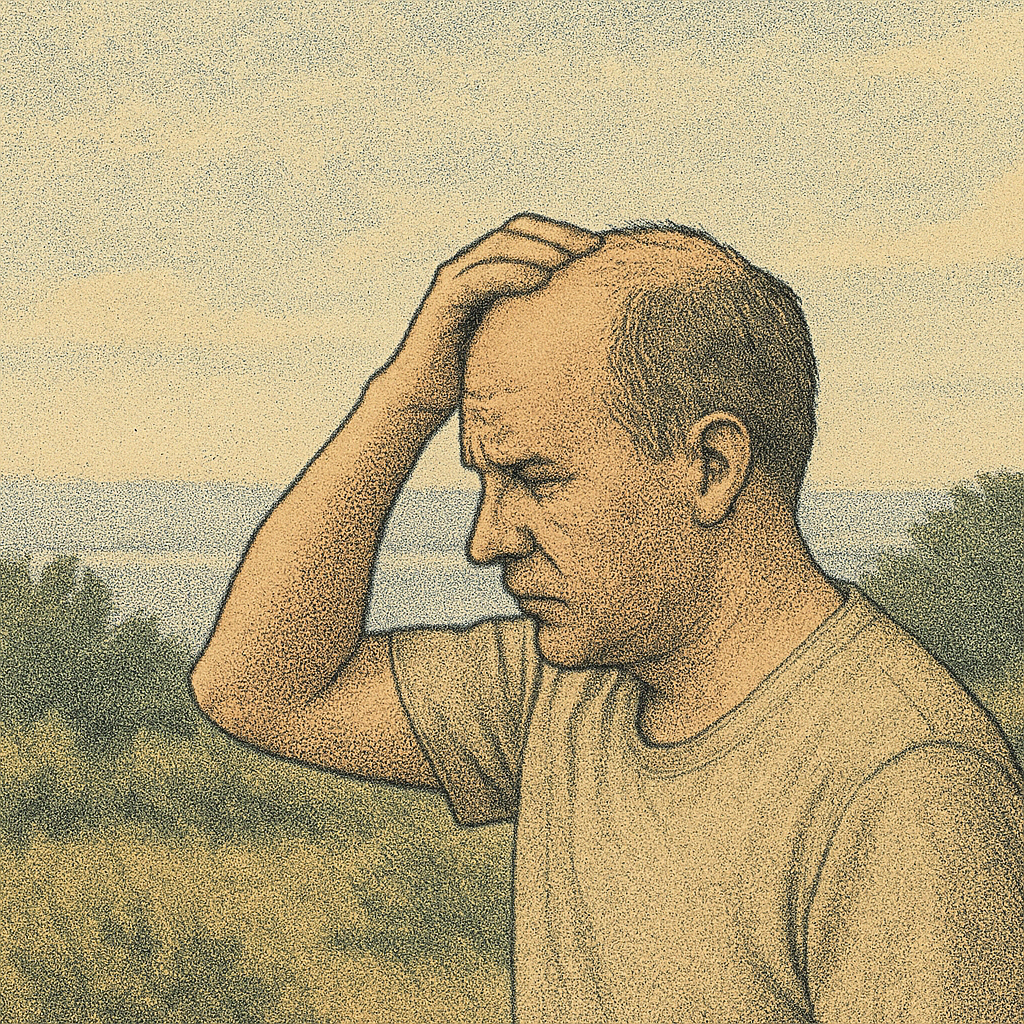Hair loss is a prevalent concern among men of various ages, often accompanied by feelings of frustration and insecurity. Whether experiencing gradual thinning, receding hairlines, or noticeable balding patches, understanding the causes and implementing effective management strategies is essential. This comprehensive guide delves deeper into the factors contributing to hair loss, offers practical tips for prevention and treatment, and explores additional lifestyle adjustments that can support healthy hair growth.
Understanding Hair Loss in Men
Hair loss can result from a combination of genetic predisposition, hormonal changes, aging, and lifestyle factors. The primary type, Androgenetic Alopecia (male pattern baldness), is influenced by genetics and hormones, typically leading to progressive hair thinning starting at the temples and crown.
Other common causes of hair loss include:
- Stress: Emotional or physical stress can trigger a condition known as Telogen Effluvium, causing excess shedding.
- Nutritional Deficiencies: Inadequate intake of essential nutrients such as vitamins (particularly B vitamins like Biotin), minerals (like iron and zinc), and proteins can affect hair health.
- Medical Conditions: Certain illnesses (like thyroid disorders), medications (such as those for hypertension or depression), and treatments (including chemotherapy) can lead to temporary or permanent hair loss.
- Poor Scalp Health: Conditions like dandruff (seborrheic dermatitis) or scalp infections (such as fungal infections) can contribute to hair thinning.
- Lifestyle Factors: Smoking, excessive alcohol consumption, poor diet lacking in essential nutrients, and aggressive hair styling practices (like tight hairstyles or frequent use of heat styling tools) can impact hair growth.
Early Signs and Symptoms
Recognizing early signs of hair loss can prompt timely intervention and better treatment outcomes. Look out for:
- Increased hair shedding during showers, combing, or on pillows.
- Thinning of hair around the crown or temples, noticeable when comparing photos over time.
- A receding hairline that forms an "M" shape or a widening part.
- Reduced hair density or changes in hair texture, making it appear finer or weaker.
Consulting a dermatologist or trichologist at the first signs of hair loss allows for a personalized assessment and treatment plan tailored to individual needs.
Effective Strategies for Managing Thinning Hair
Nutrition and Diet*
A balanced diet rich in vitamins, minerals, proteins, and essential fatty acids supports optimal hair growth and overall health. Consider incorporating the following into your diet:
- Lean Proteins: Chicken, turkey, fish, eggs, legumes (beans and lentils), and tofu.
- Fruits and Vegetables: Berries (blueberries, strawberries), leafy greens (spinach, kale), carrots, and sweet potatoes. Whole Grains, Brown rice, oats, quinoa, and whole wheat products.
- Healthy Fats: Avocado, nuts (almonds, walnuts), seeds (chia seeds, flaxseeds), and olive oil.
Supplements such as biotin, vitamin D, omega-3 fatty acids (found in fish oil or flaxseed oil), and iron can complement dietary efforts to support hair health. Consult with a healthcare provider before starting any new supplements, especially if you have underlying health conditions or are taking medications.
Scalp Care*
Maintaining a clean and healthy scalp environment is crucial for optimal hair follicle function and overall hair health. Use gentle shampoos and conditioners suitable for your scalp type (dry, oily, or sensitive). Avoid harsh chemicals, sulfates, and parabens that can strip the scalp of its natural oils and cause irritation.
Regular scalp massages stimulate blood circulation to the hair follicles, promoting nutrient delivery and hair growth. Incorporate this into your hair care routine using fingertips to gently massage the scalp in circular motions for a few minutes before washing hair.
Hair Care Practices*
Handle your hair gently to minimize breakage and damage. Use a wide-toothed comb or soft brush for detangling wet hair, starting from the ends and working your way up to the roots. Avoid aggressive brushing or combing, especially when hair is wet and more prone to breakage. Limit the use of heat styling tools (like hair dryers, curling irons, and straighteners) that can weaken hair strands and contribute to hair breakage. When using these tools, apply a heat protectant spray or serum to minimize damage.
Avoid tight hairstyles that pull on the hair follicles (such as tight ponytails, braids, or cornrows), as this can lead to a type of hair loss called Traction Alopecia.
Medical Treatments*
Several FDA-approved medications and treatments can help slow down hair loss and stimulate new hair growth:
-Minoxidil: A topical solution available over-the-counter (e.g., Rogaine) that is applied directly to the scalp to promote hair growth and prevent further hair loss. It is effective in both men and women and can be used alone or in combination with other treatments.
- Finasteride: A prescription oral medication (e.g., Propecia) that works by reducing levels of dihydrotestosterone (DHT), a hormone that contributes to hair loss in genetically susceptible individuals. It is most effective for treating male pattern baldness and is generally well-tolerated, but it may cause sexual side effects in a small percentage of users.
- Low-Level Laser Therapy (LLLT): Also known as red light therapy or cold laser therapy, LLLT involves using a device that emits low-level laser light to the scalp. This treatment is believed to stimulate hair follicles, improve cellular metabolism, and promote hair growth. It is non-invasive and can be used as an adjunct to other hair loss treatments.
- Platelet-Rich Plasma (PRP) Therapy: A procedure that involves drawing a small amount of blood from the patient, processing it to concentrate the platelets, and then injecting the platelet-rich plasma into the scalp. PRP contains growth factors that promote hair growth and stimulate dormant hair follicles. It is considered safe and effective for treating male and female pattern hair loss, as well as other types of alopecia.
Consult with a healthcare provider or dermatologist to discuss the potential benefits, risks, and side effects of these treatments. They can help you determine the most suitable option based on your specific hair loss pattern, medical history, and treatment goals.
Hair Restoration Therapies*
For more advanced cases of hair loss or those seeking a more permanent solution, surgical hair restoration procedures may be considered:
- Hair Transplantation: A surgical procedure that involves harvesting healthy hair follicles from a donor site (typically the back or sides of the scalp, where hair is genetically resistant to DHT) and transplanting them into the balding or thinning areas of the scalp. This procedure can restore natural-looking hair growth and improve overall hair density.
- Scalp Micro-pigmentation (SMP): A non-surgical cosmetic tattooing procedure that creates the appearance of a closely shaved head or fuller hair density by applying pigment to the scalp. SMP is often used to camouflage thinning hair, create a more defined hairline, or enhance the results of hair transplant surgery. Both hair transplantation and SMP require careful consideration of candidacy, realistic expectations, and consultation with a qualified hair restoration specialist or dermatologic surgeon.
Lifestyle Adjustments*
Incorporate stress management techniques into your daily routine, such as yoga, meditation, deep breathing exercises, or spending time in nature. Chronic stress can contribute to hair loss by disrupting the normal hair growth cycle, triggering Telogen Effluvium, or exacerbating existing conditions like Alopecia Areata. Prioritize regular physical activity, such as aerobic exercise, strength training, or yoga, to improve blood circulation, reduce stress hormones, and support overall health. Aim for at least 30 minutes of moderate-intensity exercise most days of the week, or as recommended by your healthcare provider.
Quit smoking and limit alcohol consumption, as both habits can negatively impact hair health and overall wellness. Smoking restricts blood flow to the hair follicles, while excessive alcohol consumption can dehydrate the body and contribute to nutritional deficiencies. Ensure adequate sleep and restorative sleep patterns, aiming for 7-9 hours of quality sleep each night. Sleep deprivation can disrupt hormonal balance, increase stress levels, and compromise overall health, including hair growth and regeneration.
Supportive Therapies*
Explore complementary and alternative therapies that may support hair health and overall well-being:
- Scalp Massages: Regular scalp massages with essential oils (such as rosemary, peppermint, or lavender oil diluted in a carrier oil like coconut or jojoba oil) can stimulate blood circulation, promote relaxation, and nourish hair follicles. Apply gentle pressure using fingertips in circular motions for 5-10 minutes before washing hair.
- Aromatherapy: Essential oils like rosemary, peppermint, cedarwood, or lavender are believed to have hair-stimulating properties and can be added to shampoo, conditioner, or diluted in a carrier oil for scalp massages. Use essential oils cautiously and follow dilution guidelines to avoid skin irritation or allergic reactions.
- Acupuncture: An ancient Chinese healing practice that involves inserting thin needles into specific points on the body to stimulate energy flow (Qi) and promote overall health and well-being. Some studies suggest that acupuncture may help reduce stress levels, improve blood circulation to the scalp, and support hair growth.
- Herbal Supplements: Certain herbs and botanical extracts (such as saw palmetto, pumpkin seed oil, and pygeum extract) are believed to have anti-androgenic properties and may help inhibit the production of DHT, a hormone associated with hair loss in men. Consult with a healthcare provider before starting any new herbal remedies or supplements.
Here at ARTISAN we are always happy to help you on any hair journey you may find yourself on. We know it’s more than just a perfect haircut. A lot goes into maintenance and protection along with style. Feel free to always ask us for advice and we’ll be happy to assist! SEE YA SOON :)

